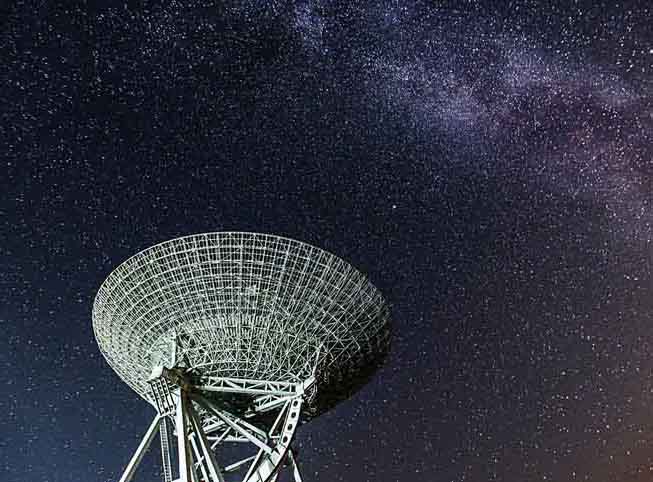 For the first time, researchers have shown that a stable frequency reference can be reliably transmitted for more than 300 kilometers over a standard fiber optic telecommunications network in order to synchronize two radio telescopes.
For the first time, researchers have shown that a stable frequency reference can be reliably transmitted for more than 300 kilometers over a standard fiber optic telecommunications network in order to synchronize two radio telescopes.
In The Optical Society of America’s Optica journal, researchers from a consortium of Australian institutions recently reported this successful transmission between two radio telescopes using an optical fiber link. They also demonstrated that the technique’s performance was superior to using an atomic clock at each telescope.
Stable frequency references, used to calibrate clocks and instruments that make ultra-precise measurements, are usually only available at facilities that use expensive atomic clocks to generate the references. This new technology could help scientists anywhere to access the frequency standard by simply tapping into the telecommunications network.
This new technique required no substantial changes to the rest of the fiber optic network and was easy to implement. Most impressively, the demonstration was performed over a fiber optic network that was transmitting live telecommunications traffic at the same time. By running the experiment on optical fibers carrying normal traffic, the researchers showed that transmitting the stable frequency standard did not affect the data or telephone calls on other channels.
To keep the frequency stable during transmission, the researchers sent the signal through the network to a selected destination and then reflected it back. Then, the returning signal was used to determine whether any changes occurred. After each round trip, any frequency shift was subtracted to precisely compensate for the measured changes. For every 100 kilometers of fiber, the round trip for the signal took approximately 1 millisecond.
According to the researchers, the successful demonstration shows that this new method is ready for use by radio astronomers who want to avoid using multiple atomic clocks across a telephone array. This capability would also allow any scientist with access to a telecommunications network to broadcast stable frequency references across a national fiber optic network.
The ability to send stable frequency references over a telecommunications network may be especially useful for radio telescope arrays such as the Square Kilometer Array (SKA). SKA is a global effort to build the world’s largest telescope using arrays in Australia and South Africa. When completed, SKA will detect faint radio waves from deep space with an approximately 50 times greater sensitivity than that of the Hubble telescope. In addition, individual radio telescopes will be linked to create a total collection area of about 1 million square meters.
The research group hopes that ready access to frequency standards as stable as those in a national measurement laboratory will serve as an enabling technology for many applications that demand precise timing and accurate frequency measurements.
To read the full news article, go HERE. To access the original Optica report, go HERE.

